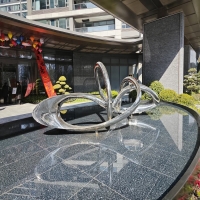Welcome to the website for landscape facilities products and knowledge.
How does the table’s shape impact sightlines and visibility in collaborative or educational settings?
The geometry of a table significantly influences visual communication and engagement in both collaborative workspaces and educational settings. Round tables foster egalitarian sightlines, allowing all participants to maintain eye contact equally, which promotes inclusive discussions and teamwork. Rectangular tables, while efficient for space utilization, often create hierarchical dynamics where individuals at the ends naturally command more visual attention. In educational contexts, U-shaped or horseshoe configurations provide instructors with unobstructed views of all students while enabling learners to see both the presenter and their peers comfortably. Curved trapezoidal tables offer a middle ground, forming circular arrangements that maintain excellent sightlines while accommodating more participants in limited spaces. The table's height profile further impacts visibility - lower tables enhance eye-level engagement for seated participants, while standing-height tables work better for brief, dynamic collaborations. Modern solutions often incorporate transparent materials or tiered designs in educational settings to further optimize visual access. Ultimately, selecting the appropriate table shape requires balancing visibility needs with spatial constraints and the specific collaborative or learning objectives of the environment.
Related search:

Recommendation
Abstract art sculpture, stainless steel metal sculpture, large-scale water feature sculpture